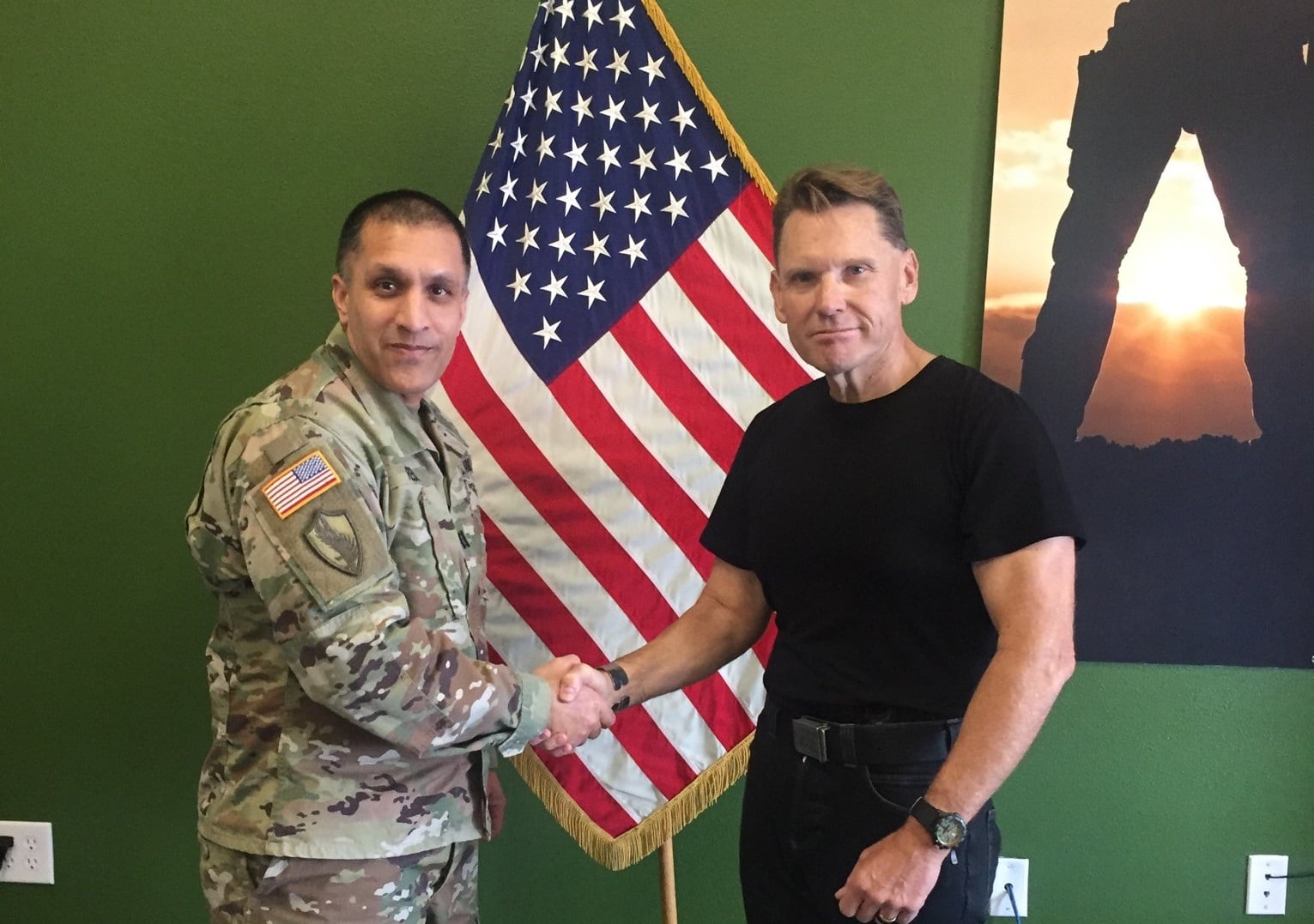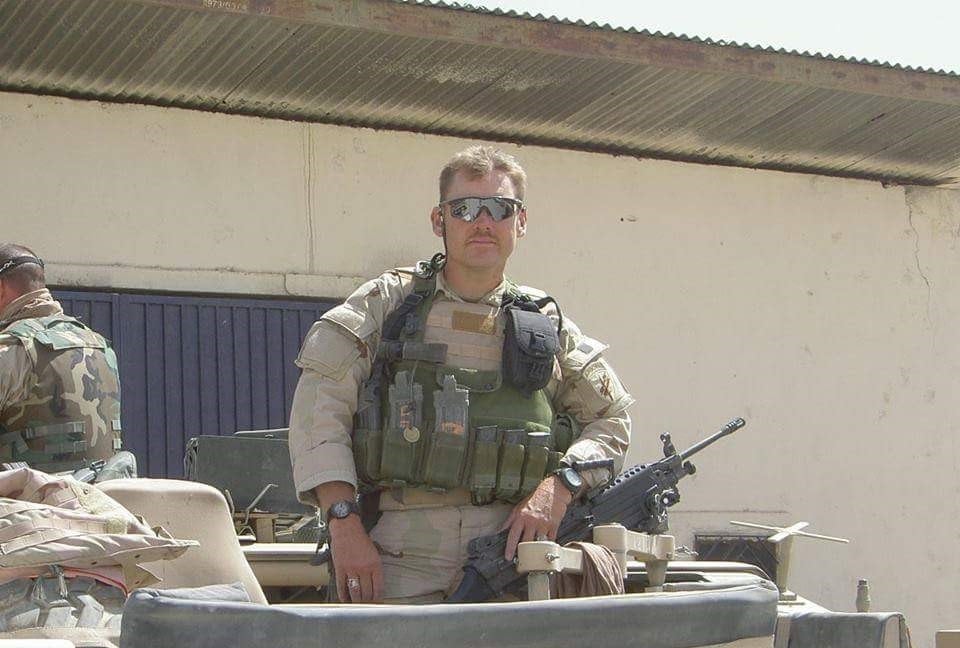A 59-year-old former Marine and civil affairs soldier graduated Army basic combat training last week — a prerequisite for him to enter the Army Reserve after a 10-year break in his military service.
Staff Sgt. Monte L. Gould, who served in Afghanistan in 2004, left the Army two-and-a-half years short of retirement in 2009 to move home and spend more time with his family.
But as work and civilian life calmed down, Gould began a year-long process to reenlist with the 405th Civil Affairs Battalion detachment out of Las Vegas, Nevada. His son also serves in that unit, Gould told Army Times in January as he prepared for a June basic combat training class at Fort Jackson, South Carolina.
Before he officially graduated last week, Gould shared some of his experiences and talked about what it was like to attend training with recruits four decades younger than him.
“I’m 59 years old. For some of these kids, I’m older than their grandparents,” Gould said during a telephone interview. “I went through [Marine Corps boot camp] in 1978. It’s a whole different world.”
The quality and quantity of gear issued to recruits is a lot greater nowadays, to say nothing of the actual instruction afforded to trainees.
RELATED

“The firearms training was excellent,” and there’s “a lot more overall functional fitness,” Gould said, noting he shot expert on his rifle’s iron sights and with the M68 reflex optical device. “The equipment and the ranges they have at this facility are amazing. They have these laser simulators. They have these other targets that track your hits. … The amount of money they have in training to put these kids through is amazing.”
The soldiers graduating are generally “more knowledgeable” and “smarter on a lot of things,” said Gould. But when it comes to the more intangible qualities, like grit and resilience, he still thinks recruits in his day beat the newer generation.
Drill instructors in 1978 were “borderline sadistic,” Gould said. “We ran every day in boots and utility pants with a T-shirt.”
“Was it smart? No, it caused a lot more leg injuries and it caused a lot more problems running in boots. But we were hard. … I couldn’t do that today,” Gould said. “Honestly, the way they got the fitness program designed here for strength and speed is excellent.”
Army leaders have gradually been rolling out the new Army Combat Fitness Test over the past year. The six-event ACFT is intended to better prepare soldiers for combat tasks through functional fitness while reducing the risk of musculoskeletal injuries. Although the ACFT still isn’t being taken for the record by soldiers already in the force, recruits must pass the new test to graduate basic training,
Gould’s first score on the ACFT was a 409 out of a possible 600 points. His second score was 460. Those numbers physically qualified the 59-year-old for the majority of Army career fields, he said.

The ball throw and the 2-mile run are the events Gould is looking to improve upon. But leg tucks appeared to be the hardest for most soldiers across the training formation, he added.
Sprints, sandbag squats and circuit training were among the exercises used to prepare the recruits for the ACFT. The training regimen generated a lot of improvement for the younger recruits, some of whom couldn’t pass the test when they first arrived, and it helped Gould improve his scores, too.
“My PT score went up. I got better than the average, like in the top 30 percent of the class,” Gould said. “There’s a lot of anxiety in the force, but it’s a good test, in my opinion. I really liked [it].”
Gould also had the misfortune of attending basic training during the coronavirus pandemic. Unlike his fellow recruits, Gould is closer to the at-risk age demographic where the virus can cause more concerning health problems. Gould never tested positive for COVID-19 in training, though many others have.
“[Most people] never showed a symptom,” he said. “I wasn’t really concerned. I don’t have any health issues. There were a lot of precautions and they really stressed that.”
Gould spent the majority of training serving as a squad leader, and was cited for his “leadership” and “candor” in final counseling reports he showed Army Times.
“With my squad, I dropped the hammer on them pretty hard,” Gould explained. “I tried to train and mentor the leaders and the kids in the platoon as best I could.”
During the final days of basic training, Army Training and Doctrine Command boss Gen. Paul E. Funk “coined” Gould in recognition of his performance.
Gould passed the coin on to a promising young soldier he mentored who is soon heading to college with plans to become an officer. He said he hoped it would help motivate her as she starts her own career.
“Contemplating my next challenge, contract and adventure,” Gould wrote on a post to friends and family over social media a week before graduation. “This is in the bag and complete, check that off. A great adventure for an old man.”
Kyle Rempfer was an editor and reporter who has covered combat operations, criminal cases, foreign military assistance and training accidents. Before entering journalism, Kyle served in U.S. Air Force Special Tactics and deployed in 2014 to Paktika Province, Afghanistan, and Baghdad, Iraq.




